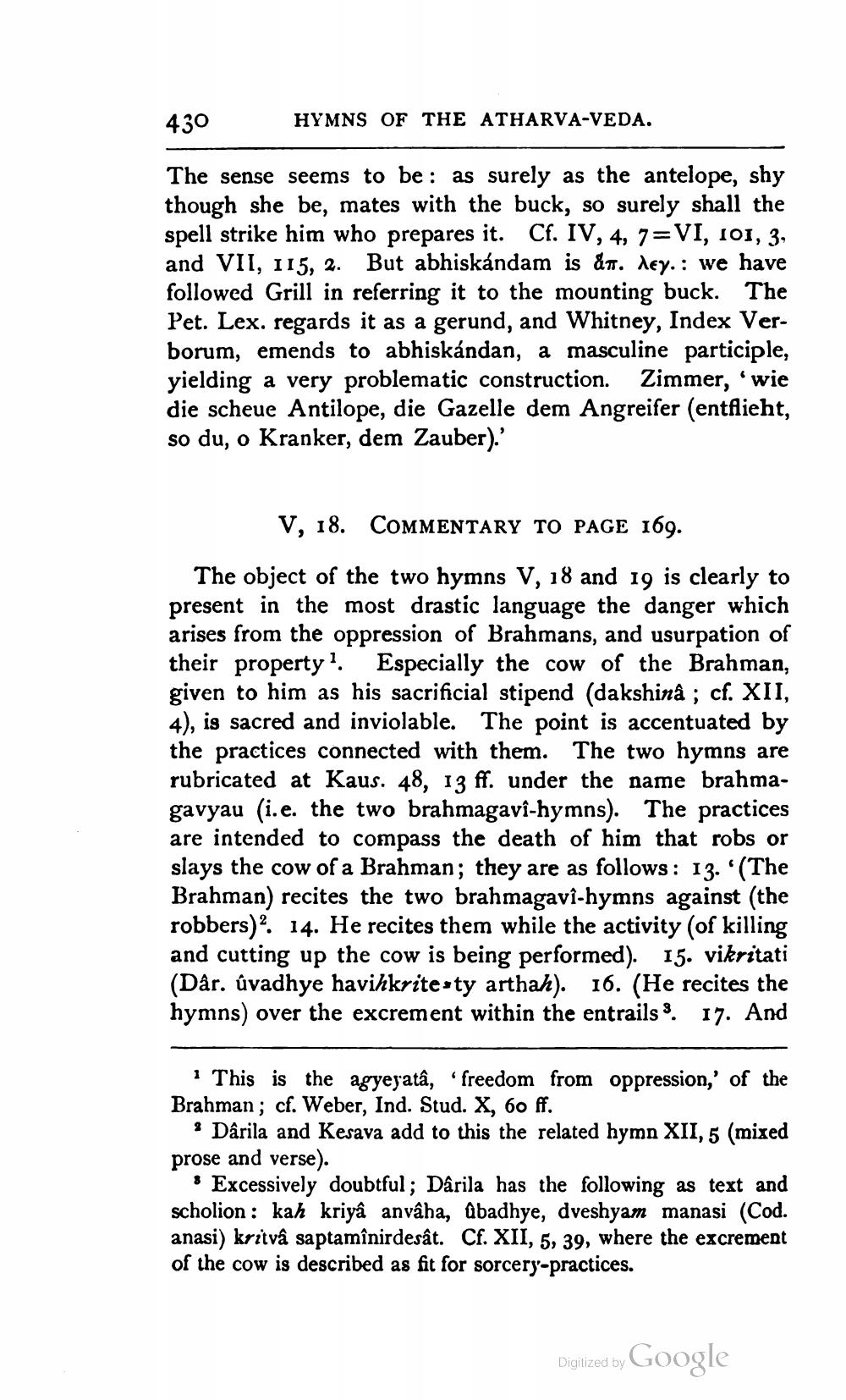________________
HYMNS OF THE ATHARVA-VEDA.
430
The sense seems to be: as surely as the antelope, shy though she be, mates with the buck, so surely shall the spell strike him who prepares it. Cf. IV, 4, 7=VI, 101, 3, and VII, 115, 2. But abhiskándam is &π. λey. we have followed Grill in referring it to the mounting buck. The Pet. Lex. regards it as a gerund, and Whitney, Index Verborum, emends to abhiskándan, a masculine participle, yielding a very problematic construction. Zimmer, 'wie die scheue Antilope, die Gazelle dem Angreifer (entflieht, so du, o Kranker, dem Zauber).'
V, 18. COMMENTARY TO PAGE 169.
The object of the two hymns V, 18 and 19 is clearly to present in the most drastic language the danger which arises from the oppression of Brahmans, and usurpation of their property 1. Especially the cow of the Brahman, given to him as his sacrificial stipend (dakshinâ; cf. XII, 4), is sacred and inviolable. The point is accentuated by the practices connected with them. The two hymns are rubricated at Kaus. 48, 13 ff. under the name brahmagavyau (i.e. the two brahmagavi-hymns). The practices are intended to compass the death of him that robs or slays the cow of a Brahman; they are as follows: 13. '(The Brahman) recites the two brahmagavi-hymns against (the robbers). 14. He recites them while the activity (of killing and cutting up the cow is being performed). 15. vikritati (Dâr. úvadhye havihkrite ty arthak). 16. (He recites the hymns) over the excrement within the entrails. 17. And
This is the agyeyatâ, 'freedom from oppression,' of the Brahman; cf. Weber, Ind. Stud. X, 60 ff.
2 Dârila and Kesava add to this the related hymn XII, 5 (mixed prose and verse).
Excessively doubtful; Dârila has the following as text and scholion: kah kriyâ anvâha, ûbadhye, dveshyam manasi (Cod. anasi) kritvâ saptamînirdesât. Cf. XII, 5, 39, where the excrement of the cow is described as fit for sorcery-practices.
Digitized by
Google




